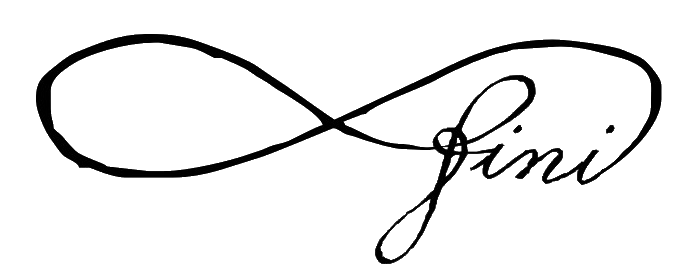News
Kindergartens and schools
Every kindergarten and school that wishes to participate in our project can fill out the application.
Parents
Would you like your child to participate in an international ‘Say Hello to the World’ project? You can speak to your kindergarten teacher and inform her about us, or contact us. We will try to do our best to make it happen.
News
FUNCTIONAL KNOWLEDGE THROUGH “FIVE FINGERS” ACTIVITIES
09/01/2020 08:33:05
The system of formal education requires reproducing the contents of different educational subjects while the use of the same content is being ignored. According to Piaget's theory, children can imagine about abstract content at the age of eleven, and the educational programs are adapted to it accordingly. Perhaps Piaget himself would have changed his theory because children today already have abstract thinking skills in the preschool period. This kind of thinking skills helps children to solve logical problems as well as understand their meaning. Reproductive knowledge does not support children to give answers based on their own thinking skills, which in fact would encourage them to form their own opinions and thoughts. We have proved that preschool children are capable of abstract thinking through the activities of five fingers.
This is our second year participating in the project, and our second kindergarten located in Sarajevo is taking part this year. This time we wanted to realize functional knowledge where the context of certain information is given, understood and brought to a certain point. The theory was tested in the simple situation and that’s how the idea of functional thinking/learning began: We placed a book next to a wall and we made sure that every child saw the book. Then we placed the book on the floor facing down without the children notching. When the children were asked what might have happened to the book, most of them said that the book had fallen. Next time, we repeated the same thing, but this time we put the book facing up. And again, the kids were asked what happened, and they said that the book had slipped.
In the same way, we have dealt with the relations in family relationships through Me and My Family activity. Based on the previous experience that Aunt or Uncle are brother or sister of father or mother, they come to the conclusion that they will be Aunt or Uncle to their brother's or sister's children.
Having in mind the fact that the internet and the informational technology have changed a lot of aspects of life, the use of it in education is justified. So we used it to communicate with another kindergarten in Poland throughout the stages of the project “Say Hello to the World”. From a certain place distance, our theory of functional learning in kindergarten was confirmed. It is implied that children are capable of understanding expressions and their meanings and connecting them to the experiences they already possess. The children are supported through visual and audio aids to make such correlations. Abstract ideas are concepts which need to be visualized because they can’t be illustrated by certain examples. On a simple way, the explanation of technological developments in computer programs trough out interaction from a distance showed to be possible only when the child understood it properly, and imagined it in his mind.
Characteristics of the Thought Process
Thinking can be defined as solving a problem, asking for an answer to a question, and reaching to a conclusion. The thinking process is triggered in situations in which the previous knowledge and experience is not enough to make the person successfully adapt to the new situation. In such situations, we used previous knowledge and experience in a completely new way with children; we looked for ways to solve problems, searching for the right resources which could be used to achieve the goal.
The essence of opinion is to see relationships; it enables children to understand relationships between the elements in a given situation. Children feel the need for an insight into their inner connection with previous experiences. By insight it is determined whether something is or is not (e.g. whether a penguin is a bird or whether I am a cheerful child,) we determined the similarities and differences between two or more objects; the causes or consequences of events; the relationships between circumstances, is something soon or later, up or down, yesterday, today, tomorrow, past and future etc. An opinion is a purposeful mental activity that is always focused on a goal that provides satisfaction of some human needs. Opinion is, therefore, an activity which can be adopted. It allows a person to change the environment and to adapt it to his personal needs. However, there are situations in which something more is needed. One often finds themselves in situations that can not be handled by the previous knowledge and experiences. Problems are faced because of these new situations. Then the child to form an opinion. The following example would clarify this process. A child wants to open the door. After some trials, she picks a toy, takes it to the door, stands on the toy, and ... triumphantly opens the door with a delighted face.
Abstract Imagining in the Domain Seriation of the Classification Analogy And Associations
Functional thinking offers possibilities of practical and versatile applications. This sustainably form of thinking can be used in several ways while providing a better basis for further learning.
Schemas, ways of thinking and solving problems by putting, pairing, joining, sorting sequences, are formed through experiences and allowing further learning.
The teacher needs to know the developmental specifications of children but also they should be well aware of the different rates and paces children develop. Children’s intellectual abilities and their sources of the motivation particularly determine the level of engagement and perseverance in learning.
Cognitive Domain of Learning
Functional tasks – development of abilities
- Knowledge
The ability to remember previously learned information
- Understanding
The ability to understand the meaning of the learned information
- Application
The ability to apply learned information
The main point of functional learning is to follow the dynamics of child development. It is through playtime that children learn and discover certain abilities.
Because of the special need for stimulation, we develop certain models of learning. The children are not given instructions, instead, they make decisions by themselves. Dealing with thinking skill tasks and activities, forms the basis for understanding, future learning, cognitive development and communication in children. When a child explores spontaneously, it satisfies and develops not only their need for learning and movement, but also their emotional needs. This way, the child gains continuity, persistence, and the feel of comfort. As a result of this, the child gets a chance of practical and versatile applications. But at the same time, what they have learned so far has a longer sustainability, and is used in several ways, contents, and also provides a different way of future learning.
When a child is asked to guess what a person doing a specific job is called, for instance,
“Who is the person that makes out clothes?”, he gives the name of the person he knows doing that job instead of saying the name of the job itself, “Tailor”.
Another example in which children seem to be using functional way of thinking is the question “Why does grass grow?”.
In their answers children come up with an incorrect cause-effect relationship. They give answers such as “Grass grows so that I don’t hurt myself when I fall”. This seemingly functional way of thinking in fact is nothing other than spontaneous way of thinking. Because the conclusion they have arrived at is not correct.
New Knowledge
Functionally changed knowledge needs to be developed from the earliest childhood by directing children through the simplest content and activities; bringing things into a certain relationship; linking the content to the previous knowledge, that is, with the experience the child has; and familiarizing them with the understanding of the words with their meaning. Because young children think differently than older children and adults.
Barbel Inhelder and Jean Piaget (1958) were the ones who gave us the most important insights into the thinking process of young children. What they discovered was that among other things, is that young children think about transduction, the subject toward another subject, and the event for an event, not induction (using a set of specific facts to arrive at a general conclusion) or deduction (by applying the general principles of concrete facts which should be concluded). Transduction being a conclusion in which a child goes from one fact to another. [1]
At the level of concrete operations, the child is more capable of operating things they show to themselves other than abstract material. In that sense, it is advisable to use, as far as possible, practical examples from life which are previously experienced. The new knowledge and the new methods are fundamental for education, which leads to development and growth of the human mind and makes all developed achievements possible.




